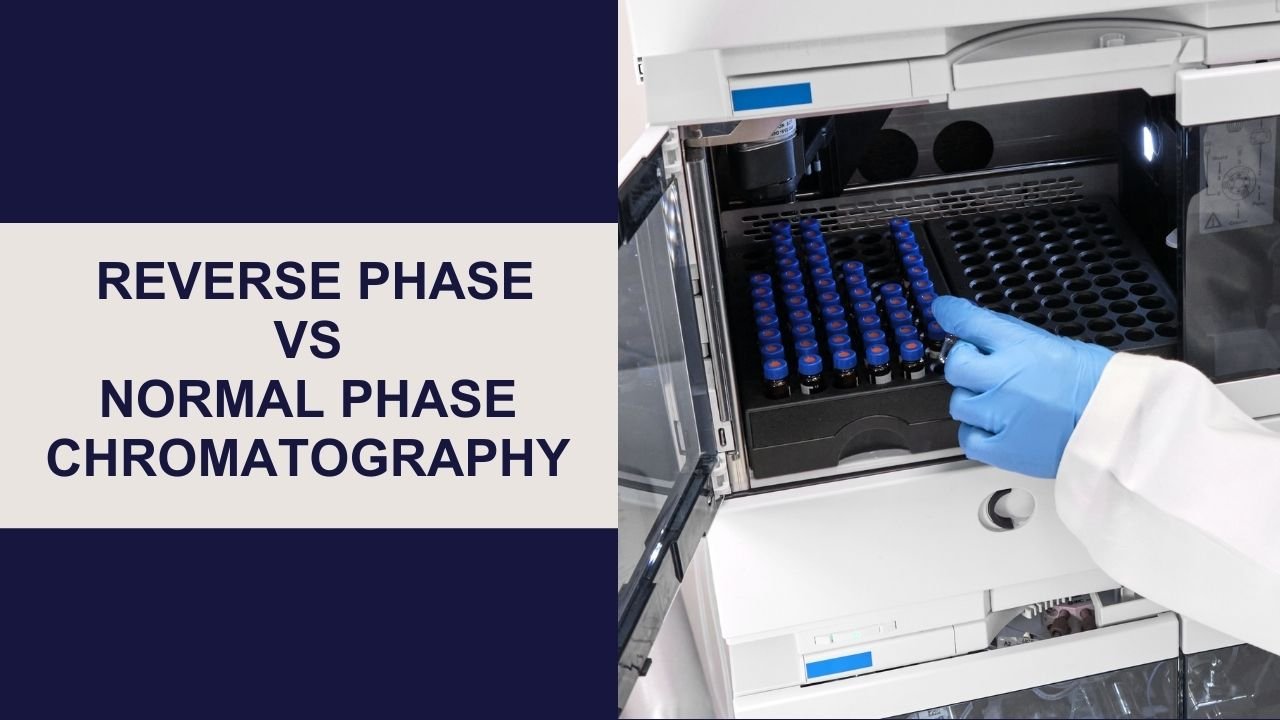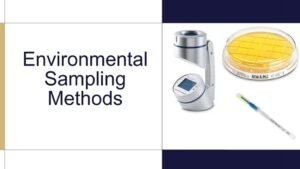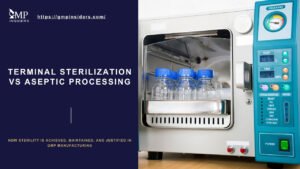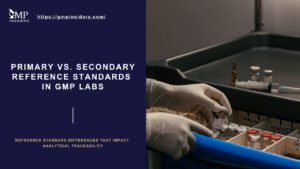High-performance liquid chromatography (HPLC) has been extensively utilized as an analytical technique for many years, playing a crucial role in separating and analyzing pharmaceutical drugs, drug monitoring, and quality control.
In HPLC, both NP-HPLC (Normal Phase High-Performance Liquid Chromatography) and RP-HPLC (Reverse Phase High-Performance Liquid Chromatography) techniques share similar characteristics with each offering unique advantages relative to the other. Understanding these methods is crucial for selecting the appropriate technique based on the chemical nature of the compounds to be separated, as well as the desired analytical outcomes.
Basic Principles of RP-HPLC and NP-HPLC
Both RP-HPLC and NP-HPLC rely on the interaction between the stationary and mobile phases to separate compounds, but they operate on distinct principles. This section explores the key aspects of RP and NP chromatography, including the nature of their stationary and mobile phases, the mechanisms behind their separation processes, and their typical purpose in various industries.
Stationary Phases
In chromatography, the stationary phase is a key element that determines the interaction between the analytes and the chromatographic system. In NP-HPLC, the stationary phase is polar, typically made of silica or alumina. These materials strongly interact with polar compounds, making NP-HPLC highly effective for separating substances based on polarity.
On the other hand, RP-HPLC utilizes a non-polar stationary phase. The most common stationary phases in RP-HPLC are silica particles bonded with hydrophobic groups such as C18 (octadecylsilane) or C8 (octylsilane). This non-polar surface favors interactions with non-polar compounds, allowing for the separation of a broader range of analytes, particularly those with hydrophobic characteristics.
Mobile Phases
In NP-HPLC, the mobile phases typically consist of nonpolar solvents or solvent mixtures, including n-hexane, n-heptane, dichloromethane, dichloroethane, diethyl ether, methyl acetate, ethyl acetate, acetone, isopropanol, ethanol, or methanol.
In RP-HPLC, the mobile phase typically consists of a water-based mixture combined with a miscible, polar organic solvent like acetonitrile, methanol, and tetrahydrofuran. Acetonitrile is especially preferred because of its beneficial properties, such as effectively dissolving a broad spectrum of analytes, being easily soluble in water, and working well with different types of detectors.
The ratio of water to organic solvent can be adjusted to fine-tune the separation process, making RP-HPLC highly versatile. This adjustment is particularly useful for gradient elution, where the mobile phase composition changes over time to improve the separation of complex mixtures.
READ MORE: Toxic Solvents in RP Chromatography
Separation
The separation mechanisms in NP-HPLC and RP-HPLC differ significantly due to the nature of their respective stationary and mobile phases.
In Reverse Phase (RP) chromatography, the polarity of the solvent plays a crucial role in determining the elution order and separation efficiency. A less polar (more hydrophobic) solvent will retain non-polar compounds longer, leading to increased separation. Conversely, a more polar solvent in RP chromatography will shorten the retention times of polar compounds, potentially reducing separation efficiency if the polarities of the mobile phase and analytes are too similar.
This difference in mechanisms makes RP-HPLC particularly effective for separating compounds based on their hydrophobicity, making it suitable for a wide range of applications, especially with the use of gradient elution.
In Normal Phase (NP) chromatography, the opposite is true: a more polar solvent will lead to faster elution of polar analytes because the polar analytes will have less interaction with the polar stationary phase. Using less polar solvents in NP chromatography increases the interaction between polar analytes and the stationary phase, improving separation efficiency.
Purpose
The purpose of NP-HPLC is to separate compounds with varying polarities, including lipids, vitamins, and certain pharmaceuticals. It is exceptionally functional for analyzing lipophilic compounds and non-polar substances within complex mixtures.
RP-HPLC is a highly effective method for analyzing peptides and proteins due to excellent resolution for both closely related and structurally diverse molecules across various chromatographic conditions, it allows simple manipulation of chromatographic selectivity through adjustments in mobile phase properties, and also it offers consistent reproducibility in repetitive separations over extended periods.
Types of Components Analyzed Using NP-HPLC
In NP-HPLC, analysis is conducted on the following types of substances:
- Polar Compounds: Substances with notable polarity, such as alcohols, acids, and amines.
- Hydrophobic Interactions: Non-polar or slightly polar substances that interact with the polar stationary phase.
- Lipids and Fatty Acids: These can be examined for their various structures and interactions.
- Natural Products: Including botanical extracts and metabolites.
- Small Molecules: For separation based on polarity variations, such as agrochemicals and pharmaceuticals.
Types of Components Analyzed Using RP-HPLC
RP-HPLC is used to test a wide range of components, including:
- Pharmaceuticals: For analyzing drug substances and drug products, including active pharmaceutical ingredients (APIs) and excipients.
- Peptides and Proteins: To characterize and quantify peptides, proteins, and other biomolecules.
- Organic Compounds: Such as small molecules in chemical and biochemical research.
- Natural Products: Including plant extracts and other naturally occurring compounds for both qualitative and quantitative analysis.
- Environmental Samples: For detecting and quantifying pollutants, pesticides, and other contaminants in water, soil, and air samples.
- Food and Beverages: To examine additives, preservatives, flavors, and contaminants.
- Cosmetics: To test ingredients and ensure product safety and compliance with regulations.
- Clinical Samples: For analyzing blood, urine, and other biological fluids to monitor therapeutic drug levels and metabolites.
RP vs NP Chromatography: Advantages and Disadvantages
When comparing Reverse Phase Chromatography (RP-HPLC) and Normal Phase Chromatography (NP-HPLC), it is essential to examine their respective advantages and disadvantages to determine which method best suits specific analytical needs and applications.
Reverse Phase Chromatography (RP-HPLC)
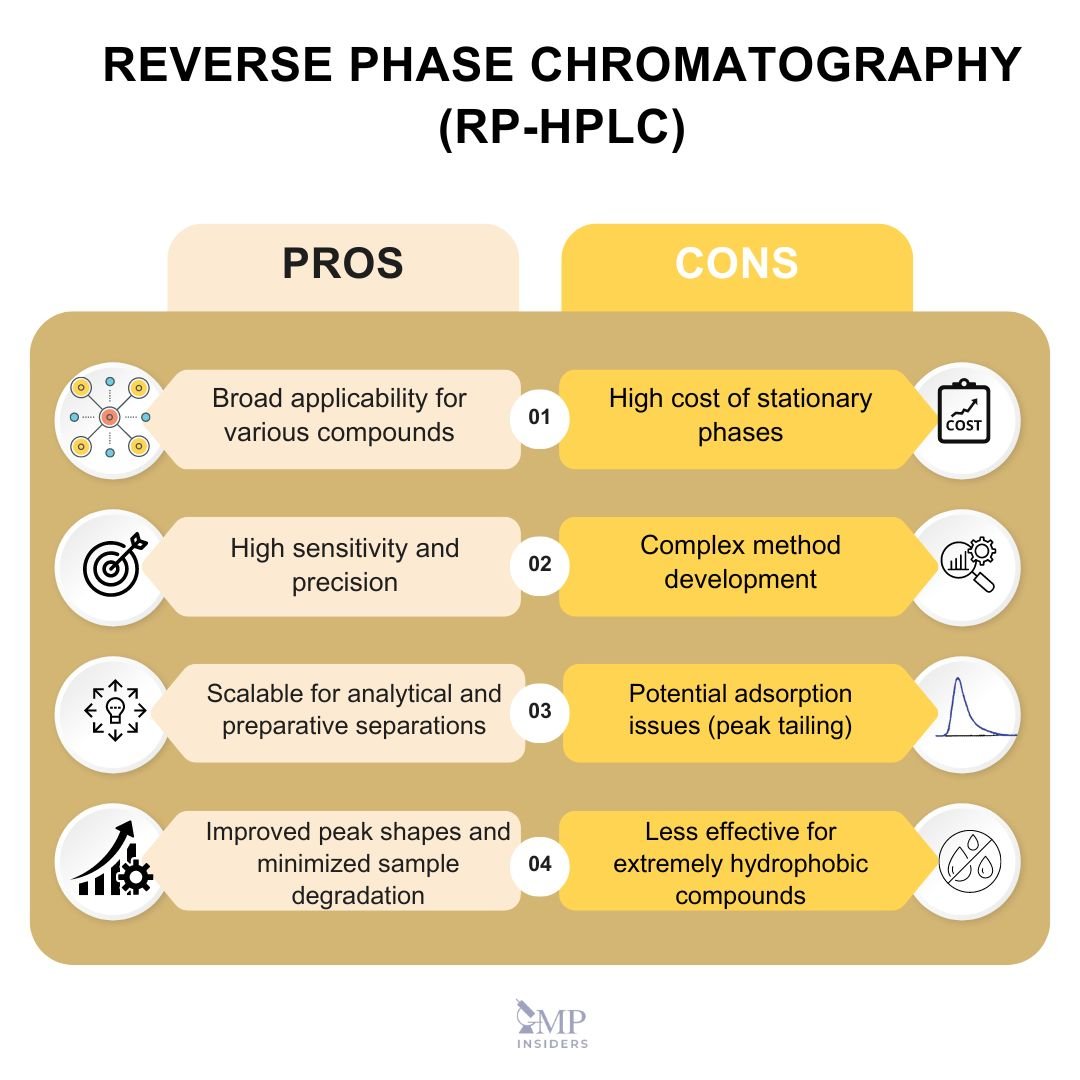
Reverse phase chromatography (RP-HPLC) is recognized for its versatility in handling a broad range of compounds, especially non-polar or moderately polar ones, and it offers unique advantages that distinguish it from other chromatographic techniques, including:
- Broad Applicability: Works well for a wide range of compounds, particularly those that are non-polar or moderately polar.
- Effective for Biological Samples: Excellent for separating proteins, peptides, and other biomolecules due to its compatibility with aqueous mobile phases.
- High Sensitivity and Precision: Provides high-resolution separation and accurate quantification.
- Better Resolution for Non-Polar Compounds: Offers excellent separation for non-polar and moderately polar compounds.
- Scalable: Suitable for both analytical and preparative applications, making it versatile for different scales of operation.
- Stable Stationary Phase: The stationary phase (e.g., C18) is durable and provides reproducible results.
- Improved Peak Shapes: Generally offers well-resolved peaks and minimized sample degradation.
Despite its many advantages, Reverse Phase Chromatography (RP-HPLC) has several disadvantages that can affect its effectiveness and practicality, such as:
- High Cost of Stationary Phases: Columns can be expensive to purchase and maintain.
- Requires Hazardous Organic Solvents: Uses solvents like acetonitrile or methanol, which can be hazardous and require proper disposal.
- Complex Method Development: Developing methods can be intricate, requiring careful optimization of mobile phase composition and other parameters.
- Potential Adsorption Issues: Non-polar compounds can sometimes exhibit peak tailing due to strong interactions with the stationary phase.
- Sensitive to Temperature Fluctuations: Performance can be affected by changes in temperature.
Normal Phase Chromatography (NP-HPLC)
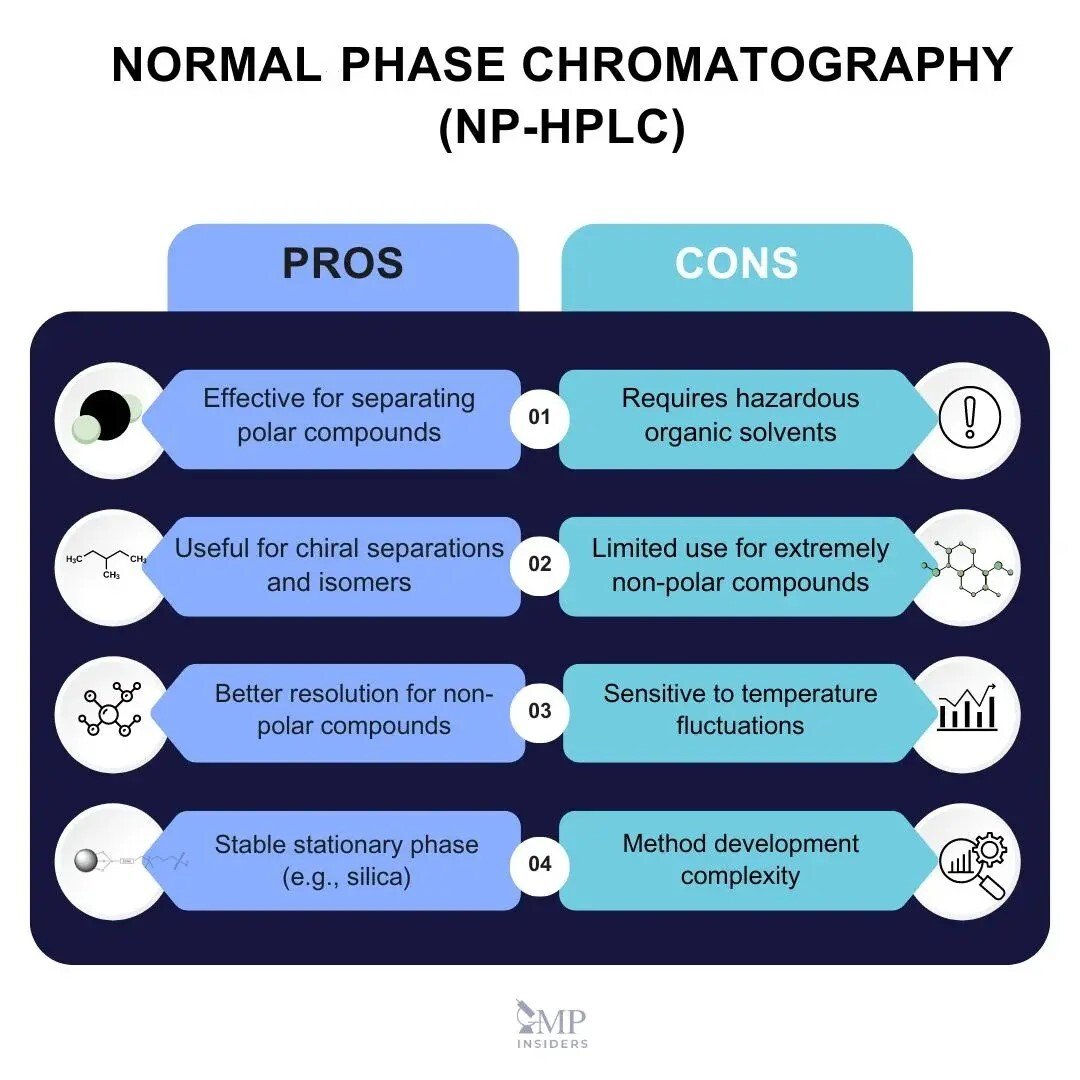
Normal Phase Chromatography (NP-HPLC) provides several advantages that enhance its effectiveness for particular analytical needs, including:
- Effective for Polar Compounds: Ideal for separating polar and highly polar compounds that are not well-suited to RP-HPLC.
- Useful for Chiral Separations: Particularly good for separating chiral compounds and isomers.
- High Sensitivity and Precision: Provides precise separation and quantification for suitable compounds.
- Stable Stationary Phase: Silica-based stationary phases are stable and durable for NP conditions.
- Improved Peak Shapes: Generally results in well-defined peaks with minimal sample degradation.
Despite its advantages, Normal Phase Chromatography (NP-HPLC) has several limitations that can impact its performance and application, such as:
- High Cost of Stationary Phases: Silica columns can also be costly.
- Requires Hazardous Organic Solvents: Uses non-aqueous solvents such as hexane or ethyl acetate, which can be hazardous.
- Limited Use for Extremely Non-Polar Compounds: Not as effective for separating very non-polar compounds.
- Complex Method Development: Developing methods can be challenging, especially for optimizing solvent systems and conditions.
Key Differences Between NP-HPLC and RP-HPLC
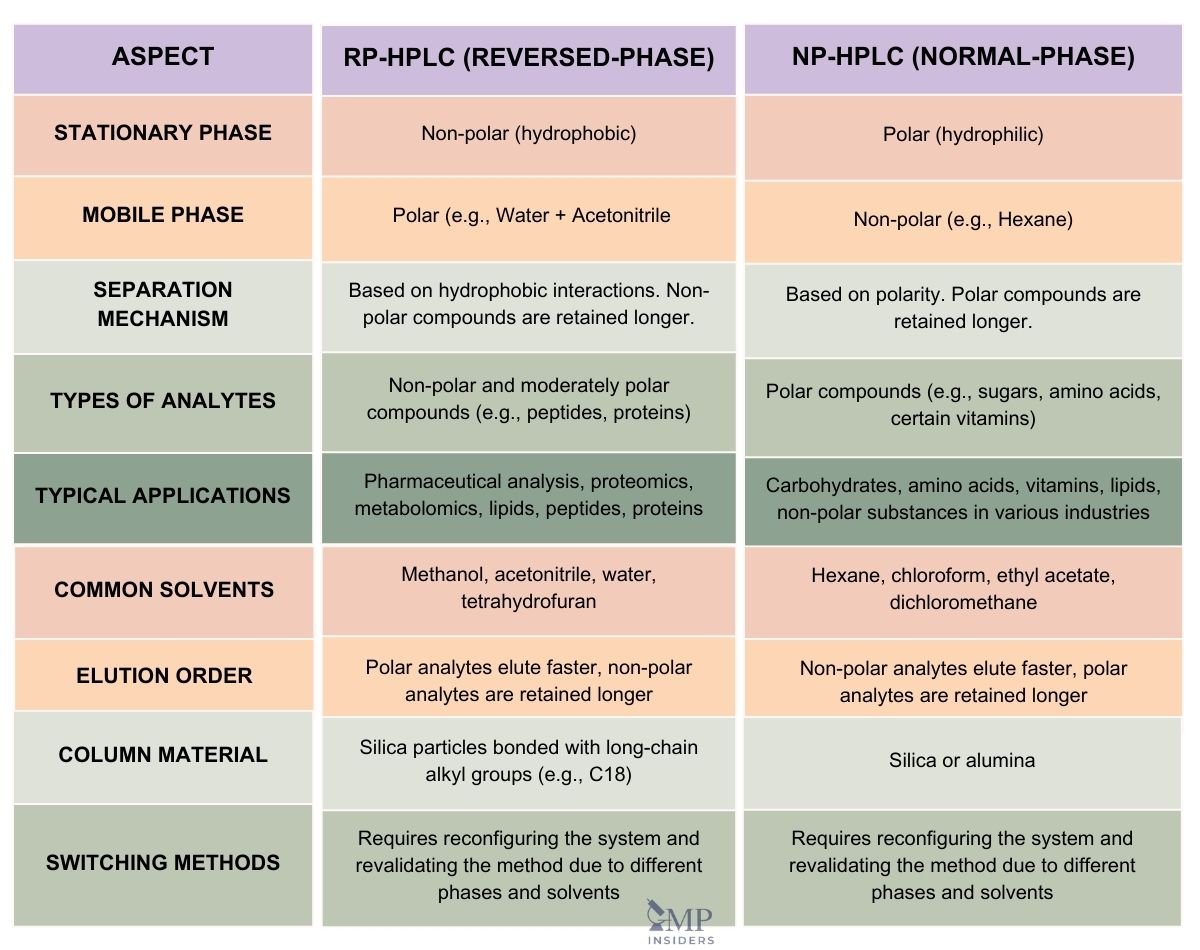
NP-HPLC uses a polar stationary phase and a non-polar mobile phase, whereas RP-HPLC utilizes a non-polar stationary phase and a polar mobile phase. In RP-HPLC, polar compounds are retained for a shorter time, while in NP-HPLC the polar compounds are retained for a longer period.
With NP-HPLC, non-polar analytes elute more quickly, and polar analytes have longer retention times. Conversely, in RP-HPLC, polar analytes elute more rapidly, and non-polar analytes have extended retention times.
FAQ
When Should I Use RP-HPLC vs. NP-HPLC?
Reverse Phase (RP-HPLC) chromatography is typically used for separating nonpolar or moderately polar compounds, which makes it well-suited for analyzing pharmaceuticals, proteins, and peptides.
You would choose Normal Phase (NP-HPLC) chromatography over Reverse Phase (RP) chromatography primarily when you are working with very polar compounds or analytes that do not dissolve well in water or polar solvents. NP-HPLC is particularly useful when analyzing compounds with high affinity for polar stationary phases, such as lipids, fatty acids, or small polar molecules.
NP is commonly used for chiral separations when RP chromatography cannot achieve the desired separation, or when avoiding aqueous mobile phases is necessary due to the sensitivity of the analyte.
Can You Switch Between RP and NP-HPLC Methods Easily?
Switching between Reverse Phase and Normal Phase HPLC methods is not simple because of the substantial differences in stationary phases and mobile phase solvents. Each method uses distinct columns and solvent systems, so changing from one to the other necessitates reconfiguring the HPLC system and frequently revalidating the method.
What Are the Typical Challenges When Switching From NP to RP Chromatography for the Analysis of Complex Mixtures?
Switching from NP to RP chromatography involves several challenges. First, the sample solubility might change drastically, as NP chromatography often uses non-polar solvents, while RP uses polar solvents like water or methanol. This could require re-evaluation or modification of sample preparation methods. Additionally, the elution order of compounds can be reverse, leading to unexpected results if not properly anticipated.
Another challenge is the need to optimize the mobile phase composition, as what works in NP might not be suitable for RP, and vice versa. The stationary phase used in RP is also different, often requiring a complete re-development of the method. Moreover, different interactions dominate in NP and RP chromatography, so the separation mechanisms will differ, necessitating careful method adjustment to achieve desired separations in RP.
How Do Temperature Changes Impact the Separation in RP vs NP Chromatography?
In Reverse Phase (RP) chromatography, increasing the temperature generally reduces the viscosity of the mobile phase, leading to faster elution times and potentially sharper peaks. However, it can also reduce the retention of analytes, sometimes resulting in co-elution of closely eluting compounds if not carefully controlled. Higher temperatures can also affect the stability of thermolabile compounds.
In Normal Phase (NP) chromatography, temperature changes can affect the solubility of the analytes in the mobile phase and the interactions with the stationary phase. While increased temperatures might reduce retention times, it could also disturb the delicate balance between the mobile and stationary phase interactions, possibly leading to less efficient separations. Both RP and NP chromatography can experience shifts in selectivity and resolution with temperature changes, requiring careful monitoring and adjustment of conditions.
What Are the Most Critical Factors to Consider When Developing a Method for RP vs NP Chromatography?
When developing a method for RP chromatography, critical factors include selecting the appropriate stationary phase (usually a C18 column), choosing the correct mobile phase composition (often a mix of water with organic solvents like acetonitrile or methanol), and optimizing the pH of the mobile phase to enhance the ionization state of analytes. Additionally, the polarity of the mobile phase must be adjusted to control the retention and separation of compounds, while maintaining a balance between resolution and run time.
For NP chromatography, the critical factors involve choosing a polar stationary phase, such as silica or alumina, and selecting a non-polar mobile phase like hexane or chloroform. The focus is on optimizing the polarity of the mobile phase to achieve the desired separation, taking into account the solubility of analytes. Another important consideration is the moisture content of the mobile phase and stationary phase, as NP chromatography is highly sensitive to water, which can drastically alter retention times and separation performance.
Final Thoughts
RP-HPLC and NP-HPLC are specialized chromatographic techniques designed for different analytical needs, each offering unique advantages based on the nature of the analytes and the desired separation outcomes. RP-HPLC is more broadly applicable than NP-HPLC.
RP-HPLC‘s broad applicability makes it a preferred choice for analyzing pharmaceuticals, proteins, and other complex mixtures where high resolution and reproducibility are critical.
On the other hand, NP-HPLC is invaluable for analyzing substances like sugars, amino acids, and certain environmental or chemical samples where polar interactions play a significant role.
Choosing between RP-HPLC and NP-HPLC requires a thorough understanding of the chemical properties of the analytes and the specific requirements of the analysis. By aligning the method with the characteristics of the compounds, analysts can ensure effective separation, accurate quantification, and reliable results across a range of applications.

